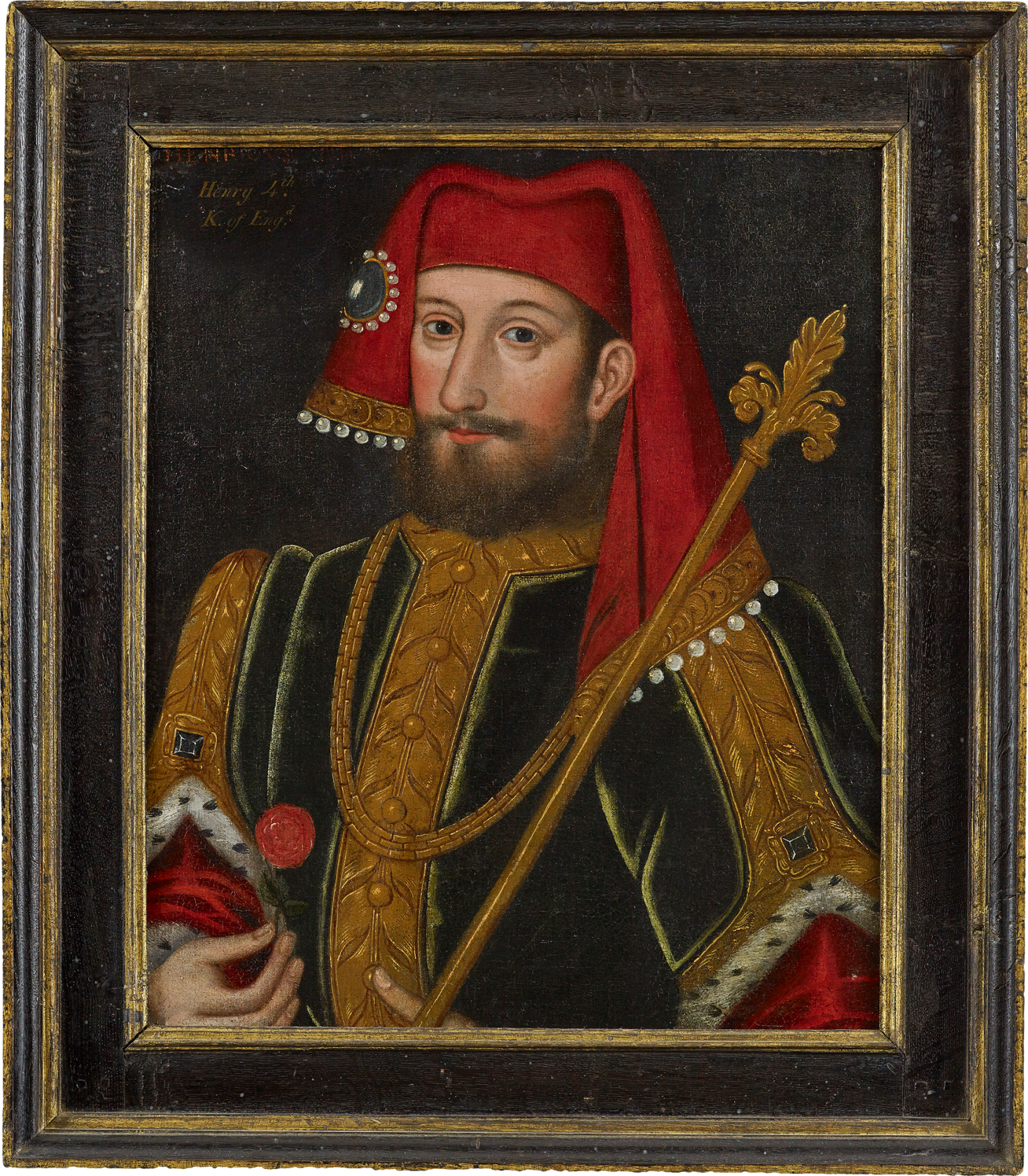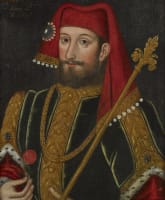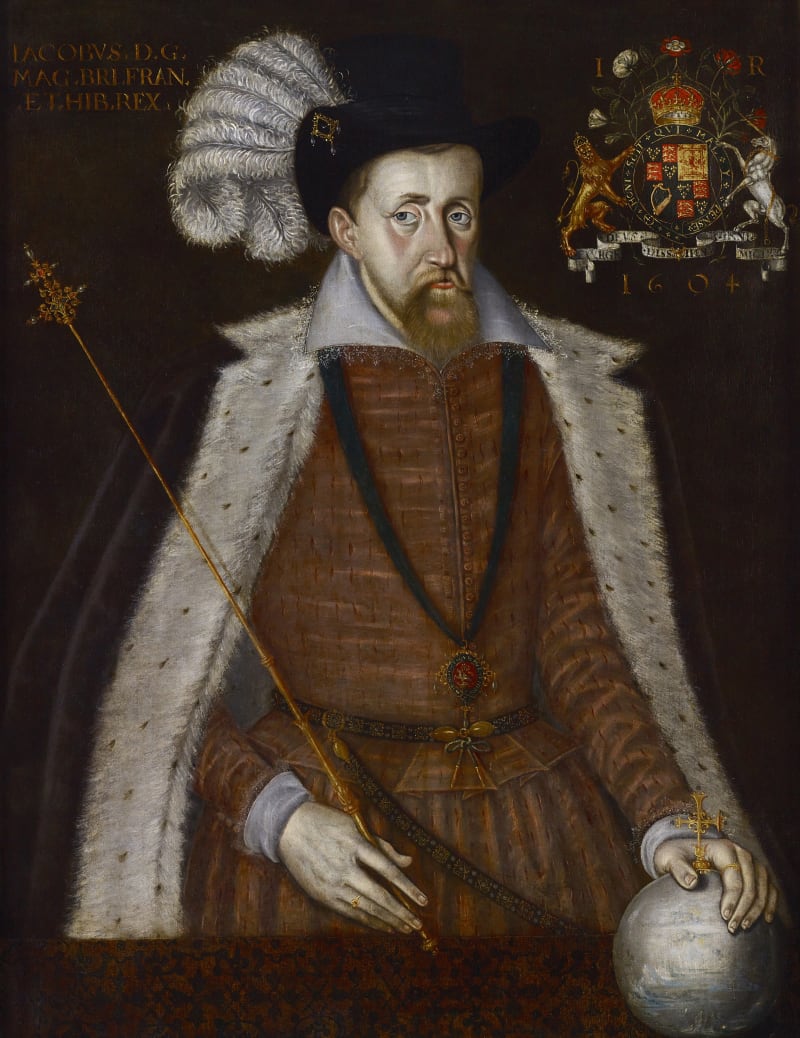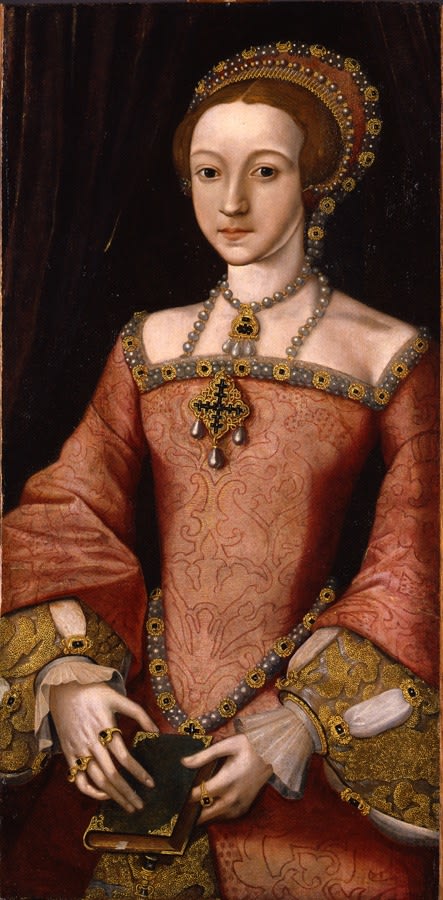As much a dynamic royal manifesto as an iconographical template, this rare portrait of King Henry IV may well have been part of a set of monarchical portraits displayed in a Jacobean ‘long gallery’.
There is no extant portrait of Henry IV painted from life and the only valid likeness is his tomb effigy in Canterbury Cathedral, where he is shown three-quarter length, his crowned head resting on a cushion, his right hand at his breast and his left hand at his side. The image we see here would have been largely fictitious, as was the case with many posthumous portraits of royals produced at this date, and in this instance, the composition was based on a likeness of Henry’s contemporary Charles VI of France, which would have been known in print form following its publication in 1555.[1] By 1580 this portrait-type had become the de facto likeness of Henry IV and over the following decades, it was replicated...
As much a dynamic royal manifesto as an iconographical template, this rare portrait of King Henry IV may well have been part of a set of monarchical portraits displayed in a Jacobean ‘long gallery’.
There is no extant portrait of Henry IV painted from life and the only valid likeness is his tomb effigy in Canterbury Cathedral, where he is shown three-quarter length, his crowned head resting on a cushion, his right hand at his breast and his left hand at his side. The image we see here would have been largely fictitious, as was the case with many posthumous portraits of royals produced at this date, and in this instance, the composition was based on a likeness of Henry’s contemporary Charles VI of France, which would have been known in print form following its publication in 1555.[1] By 1580 this portrait-type had become the de facto likeness of Henry IV and over the following decades, it was replicated by several studios, often with subtle variations of clothing and jewels. Some of the best-surviving examples of this portrait-type can be found in the Royal Collection [RCIN 402737] and the National Portrait Gallery, London [NPG 4980(9)].[2]
The red rose that the King holds is, of course, the badge of the Lancastrian Kings. Although there may be a degree of anachronism here, as it may not have been employed as such a symbol before c.1450, it is important to remember that the red rose had been chosen as an emblem of the house of Lancaster as early as the lifetime of Edmund Duke of Lancaster who died in 1296.
This present portrait is an example of what has come to be termed a ‘corridor portrait’. The long galleries of the Tudor nobility and gentry were hung with a profusion of royal and dynastic portraits. These collections evolved from smaller sets in the early part of the century that would depict, perhaps, just the owner's family and the present sovereign to examples dateable like this to the turn of the sixteenth and seventeenth centuries which might be extensive. Survival intact for these sets is rare, not least because their display required the long galleries of an architecture that was to become outmoded as the seventeenth century progressed and architecture evolved along more explicitly domestic lines. Sets of such portraits were thus removed to upper floors and attics, and piece by piece invariably were dispersed by sale.
The life and reign of Henry Bolingbroke were conspicuously arduous, even for a medieval prince. From his earliest years, even before he was twenty years old, he had steeped himself not only in the warfare that was occupation and the duty of the fourteenth-century aristocrat but in the politics of the realm. Because of his birth, this was unavoidable: he was cousin to King Richard II, as their fathers, Edward Prince of Wales and John of Gaunt Duke of Lancaster were both sons of King Edward III.
By 1387 Bolingbroke as Earl of Derby was one of the five Lords Appellant who sought to limit the power of the King's favourite the Earl of Oxford, who had been granted the grandiose title of Duke of Ireland. In that year Bolingbroke entered London, and in triumph summoned the King to meet him at the Tower. He received the adulation of the London mob, which never entirely deserted him, and which bedrock was the foundation of his later audacious action. After Oxford died in exile abroad the King and Bolingbroke appeared reconciled, and both Henry and his father were solicitous in guarding the king's safety. Those Lords that had forced the condemnation of Oxford for treason could never rest entirely easy with the thought that the amiable King was merely biding his time. When Bolingbroke repeated the assertion of the Earl of Nottingham, promoted Duke of Norfolk, that the King could not be trusted the two men were ordered by the Court of Chivalry to resolve the matter by combat. This episode intended to take place at the lists in Coventry before vast crowds was stopped at the last moment by the King, who with his advisors feared the civil disorder associated with a member of the Royal family and such a popular champion. Norfolk was sentenced to the forfeiture of his estates and perpetual banishment, and Bolingbroke, treated with more apparent kindness, was to be exiled for ten years, commuted to six.
Henry lived peacefully in France during this time, at the court of the Duke of Berry, exercising caution with regard to his intentions that proved essential to their future success. When John of Gaunt died in 1399, Bolingbroke intended to return to England to claim his inheritance. At this point, Richard revealed himself as untrustworthy and pronounced Bolingbroke's exile perpetual, taking the Lancaster lands for himself, and in the belief that he was secure set off to pacify Ireland leaving England in the incompetent grip of his uncle. Bolingbroke landed to general acclaim and after a short while, Richard's army deserted him on his hasty return from Ireland. Richard met with Bolingbroke and made a show of returning his inheritance to him, but it was of no use. On September 2nd Richard entered London with Henry to huge acclaim and on September 30th Richard officially resigned the throne which Henry claimed by right of inheritance from Henry III and by virtue of Richard's misgovernment. The official progression was then remorseless. On October 13th Henry was crowned King Henry IV of England and anointed with oil; on the following day, Richard was condemned to perpetual imprisonment. This ungainly circumstance could of course only prove temporary, and in 1400 Richard died in Pomfret Castle, self-starved said Henry, starved or murdered said the King's friends.
The remaining years of Henry’s reign were not to be peaceful ones. They were dominated by threats of invasion from the French King Charles VI, who regarded Henry as a usurper, a territorial dispute among magnates which became disorder from the Welsh led by Owen Glendower, and the famous rebellion of Henry Percy in the North. Percy was defeated in 1408 at Bramham Moor, but Henry's health was exhausted. Chroniclers speak of an illness that manifested itself by fits and lengthy trances, and of skin diseases interpreted as leprosy. Eventually in one of these fits the King collapsed before the shrine of Thomas a Becket at Canterbury and died.
[1] Cronique abrégé des rois de France (Lyon, 1555), cited in Roy Strong, Tudor and Jacobean Portraits, Vol.1, p.142.
[2] For a more complete overview of the iconography of Henry IV, see C. Daunt, (2015) Portrait Sets in Tudor and Jacobean England, 2 vols., Unpublished Ph.D. Thesis, University of Sussex, Vol.2, p.69.











